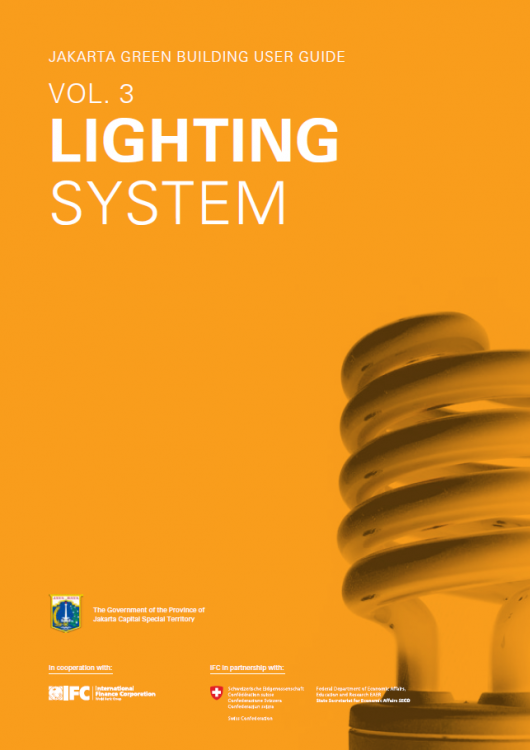Kami menggunakan cookies untuk membuat pengalaman Anda lebih baik. Untuk mematuhi petunjuk e-Pribadi yang baru, kami perlu meminta persetujuan Anda untuk menyetel cookies. Pelajari lebih lanjut .
Jakarta Green Building User Guide : Volume 3 - Lighting System
Light is a necessity for performing tasks and for creating visual comfort. Light from the sun and sky have been the primary sources of light till recent times. Even now, most of our lighting needs can be met by diffused natural light (daylight) if the building is designed accordingly. However, electric lighting cannot be avoided during hours when daylight is not available, or in spaces without daylight access. Lamps typically use electricity to create light, but also waste a lot of it as heat. This decreases the efficiency of the lighting system while also increasing the cooling load in the building. As a rule of thumb, every 3 watts of lighting energy saved results in 1 watt of cooling energy reduction. This ratio can vary depending on the building type, design and operation
- Baca | Unduh PDF
- Jakarta Green Building User Guide : Volume 3 - Lighting System
Light is a necessity for performing tasks and for creating visual comfort. Light from the sun and sky have been the primary sources of light till recent times. Even now, most of our lighting needs can be met by diffused natural light (daylight) if the building is designed accordingly. However, electric lighting cannot be avoided during hours when daylight is not available, or in spaces without daylight access. Lamps typically use electricity to create light, but also waste a lot of it as heat. This decreases the efficiency of the lighting system while also increasing the cooling load in the building. As a rule of thumb, every 3 watts of lighting energy saved results in 1 watt of cooling energy reduction. This ratio can vary depending on the building type, design and operation

